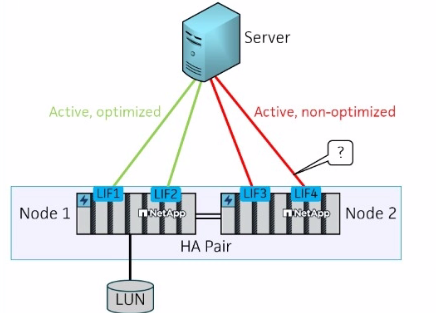Most Recent NetApp NS0-521 Exam Dumps
Prepare for the NetApp Implementation Engineer - SAN ONTAP Exam exam with our extensive collection of questions and answers. These practice Q&A are updated according to the latest syllabus, providing you with the tools needed to review and test your knowledge.
QA4Exam focus on the latest syllabus and exam objectives, our practice Q&A are designed to help you identify key topics and solidify your understanding. By focusing on the core curriculum, These Questions & Answers helps you cover all the essential topics, ensuring you're well-prepared for every section of the exam. Each question comes with a detailed explanation, offering valuable insights and helping you to learn from your mistakes. Whether you're looking to assess your progress or dive deeper into complex topics, our updated Q&A will provide the support you need to confidently approach the NetApp NS0-521 exam and achieve success.
The questions for NS0-521 were last updated on May 4, 2025.
- Viewing page 1 out of 13 pages.
- Viewing questions 1-5 out of 65 questions
An administrator finishes an installation of a new NetApp ASA system at the customer site and creates a new LUN. The customer wants to restrict the access of the LUN to specific UFs.
Where would the administrator configure this?
To restrict access to a newly created LUN to specific hosts, the administrator should configure the igroup (initiator group). An igroup is used to control which initiators (hosts) are allowed to access specific LUNs. This ensures that only authorized hosts can access the storage, enhancing security and access control.
For more details, refer to:
NetApp Documentation on iGroups (NetApp).
A storage administrator recently implemented ISCSI SAN in a customer environment. Which two actions should be done to ensure the best performance? (Choose two.)
To ensure the best performance in an iSCSI SAN implementation:
Connect host and storage ports to the same switches: This minimizes latency and maximizes the efficiency of data paths by ensuring direct connections within the same network segment.
Configure Jumbo frames in the entire data path: Setting a larger Maximum Transmission Unit (MTU) size reduces the overhead for processing each packet, thus improving overall network performance. Ensuring Jumbo frames are configured end-to-end in the data path is crucial for optimal performance.
For further details, check:
NetApp Best Practices for iSCSI
NetApp Community Discussion on iSCSI Performance
Click the Exhibit button.

A customer is testing a newly installed NetApp AFF A400 all-flash HA storage system. An SVM for FCP with a LUN on Node 1 has been configured, and a server has been connected as shown in the exhibit. For testing, the engineer plans to do a storage failover of Node 1.
After the failover, what is the expected status of the marked path?
In the scenario where a storage failover is performed on Node 1 in an HA pair, the path marked in the exhibit would become Active/Nonoptimized. After the failover, the LIFs from Node 1 that were active and optimized will switch to Node 2. Paths that were previously optimized will become nonoptimized because they are now served through the partner node.
For more details, see:
NetApp Documentation on ALUA
A customer Is setting up a four-node NetApp AFF cluster for use with NVMe/TCP and wants to use automatic host discovery.
Which protocol is used for the discovery of controllers?
For automatic host discovery in a four-node NetApp AFF cluster using NVMe/TCP, the protocol used is mDNS (Multicast DNS). mDNS allows for the discovery of controllers and other networked devices without the need for a centralized DNS server, simplifying the setup process in environments that support NVMe over TCP.
For further information, refer to:
NetApp Documentation on NVMe/TCP
NetApp Community on Host Discovery
A customer needs to verify if jumbo frames have been configured correctly for an ISCSI workload. Which command should be used?
To verify if jumbo frames have been configured correctly for an iSCSI workload, the command ping -lif <LIF> -vserver <SVM> -destination <IP> -disallow-fragmentation true -packet-size 9000 should be used. This command tests the network path with the jumbo frame size (9000 bytes) and ensures that the packets are not fragmented, confirming that jumbo frames are supported end-to-end.
For more details, you can check:
NetApp Documentation on iSCSI Configuration
NetApp Community Discussions on Jumbo Frames
Unlock All Questions for NetApp NS0-521 Exam
Full Exam Access, Actual Exam Questions, Validated Answers, Anytime Anywhere, No Download Limits, No Practice Limits
Get All 65 Questions & Answers